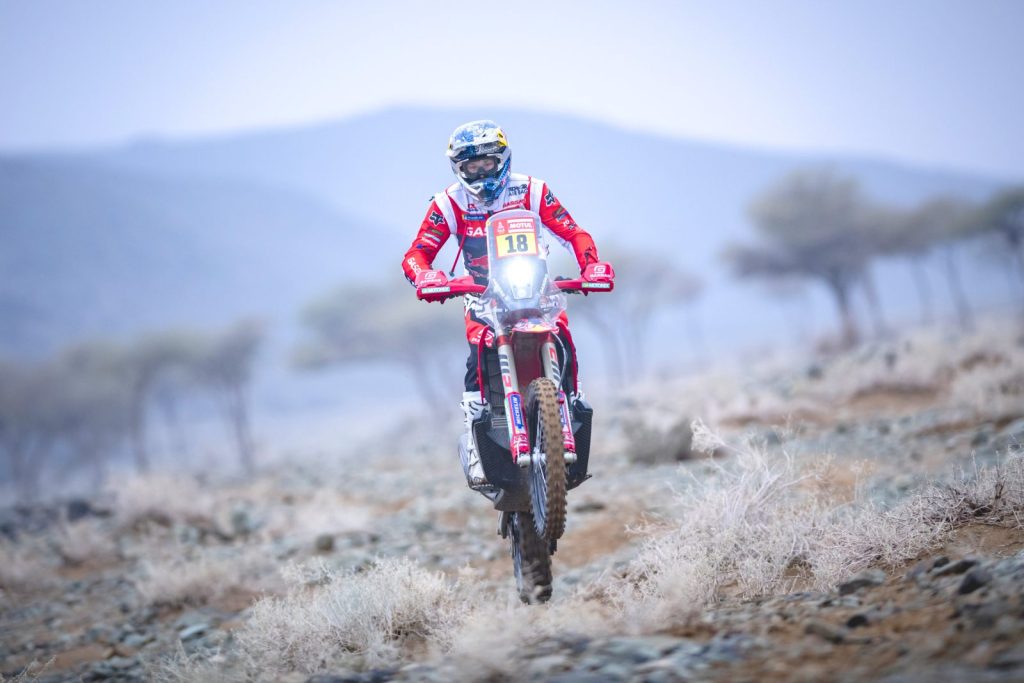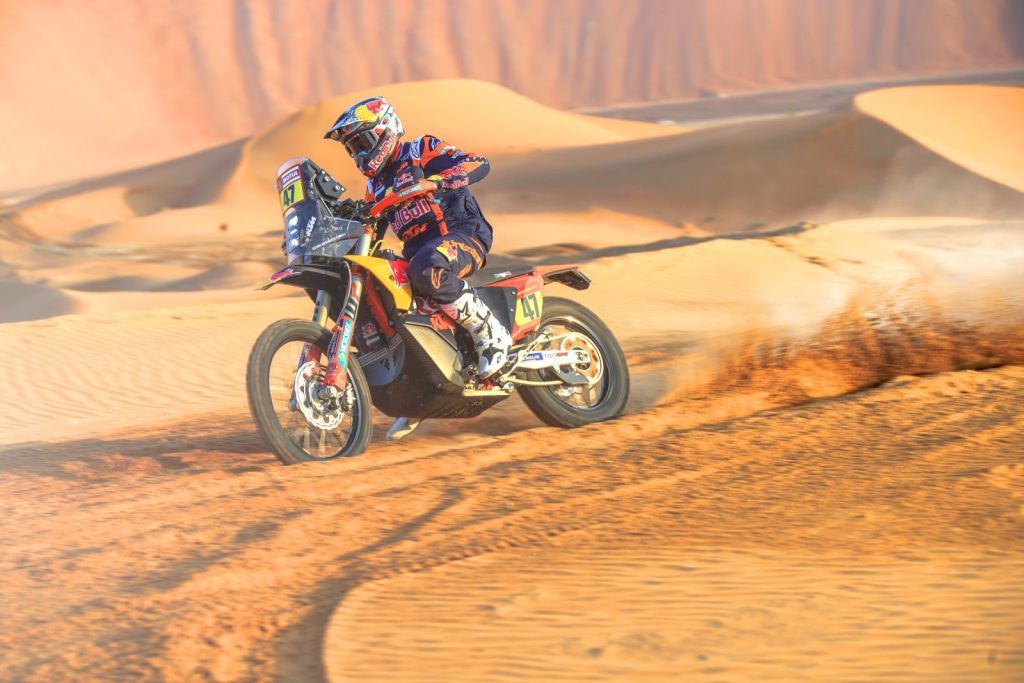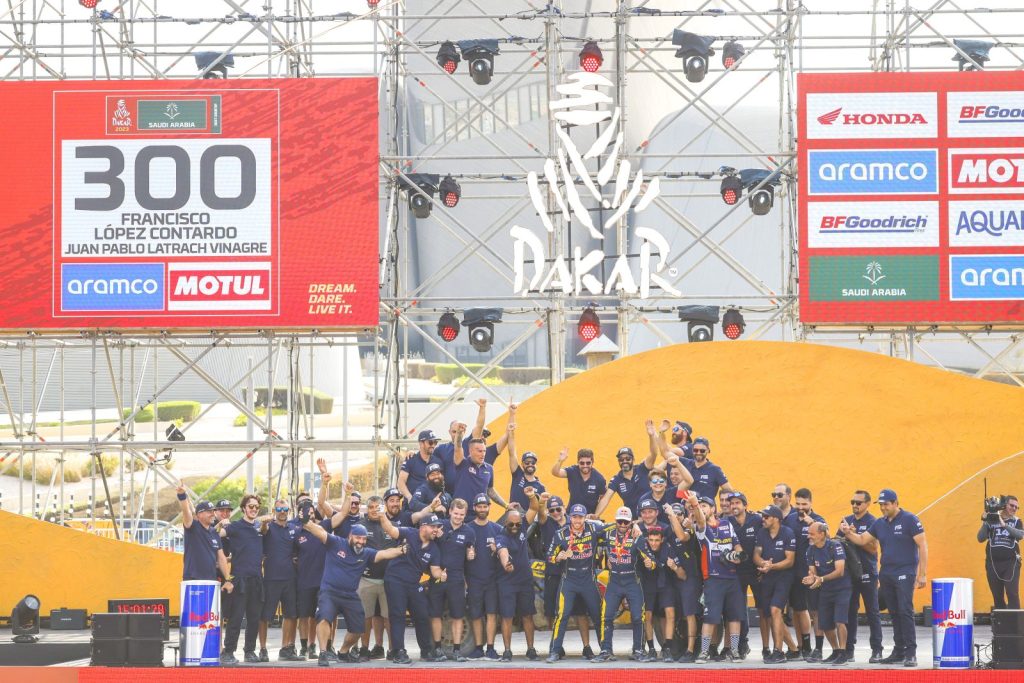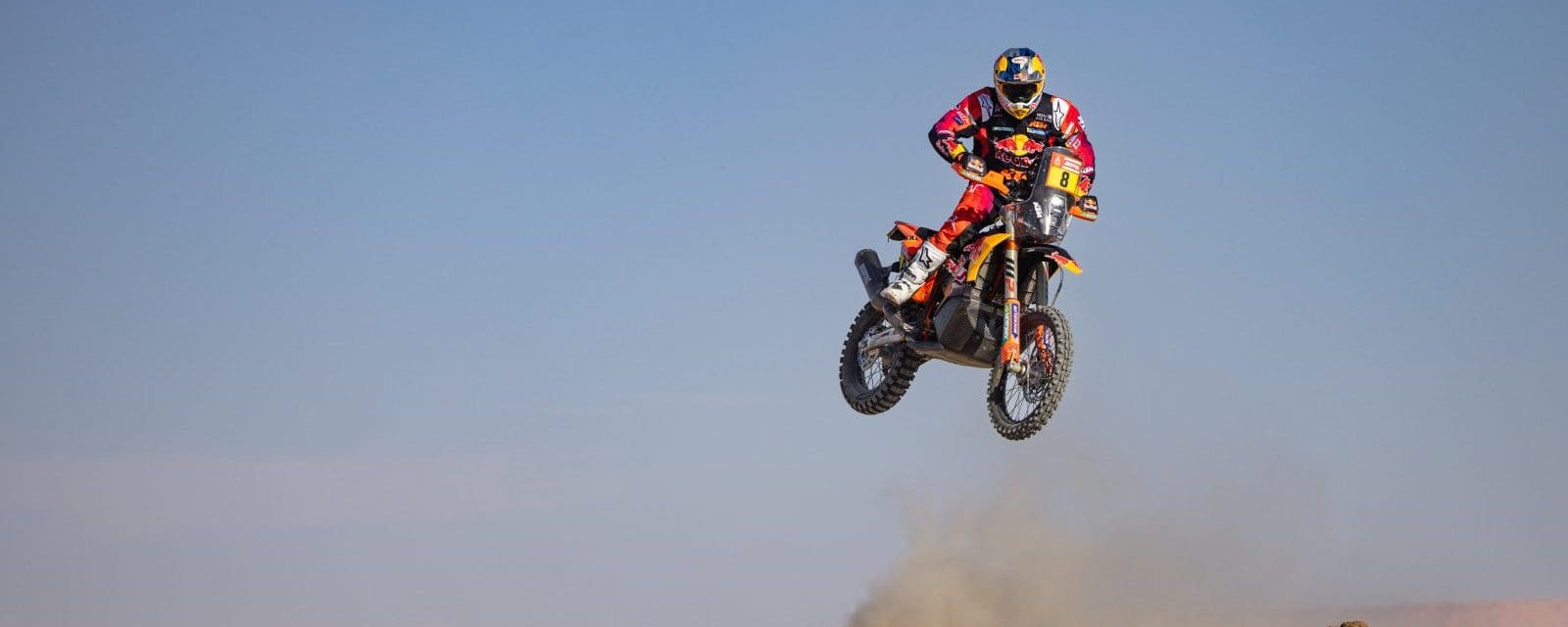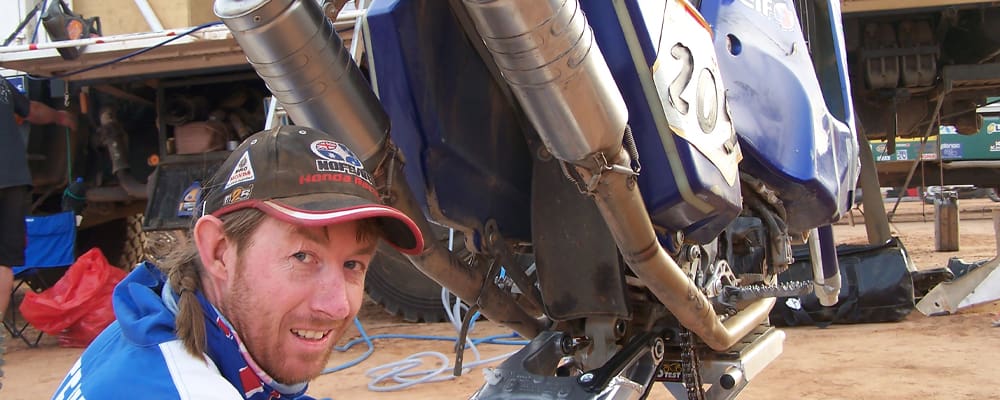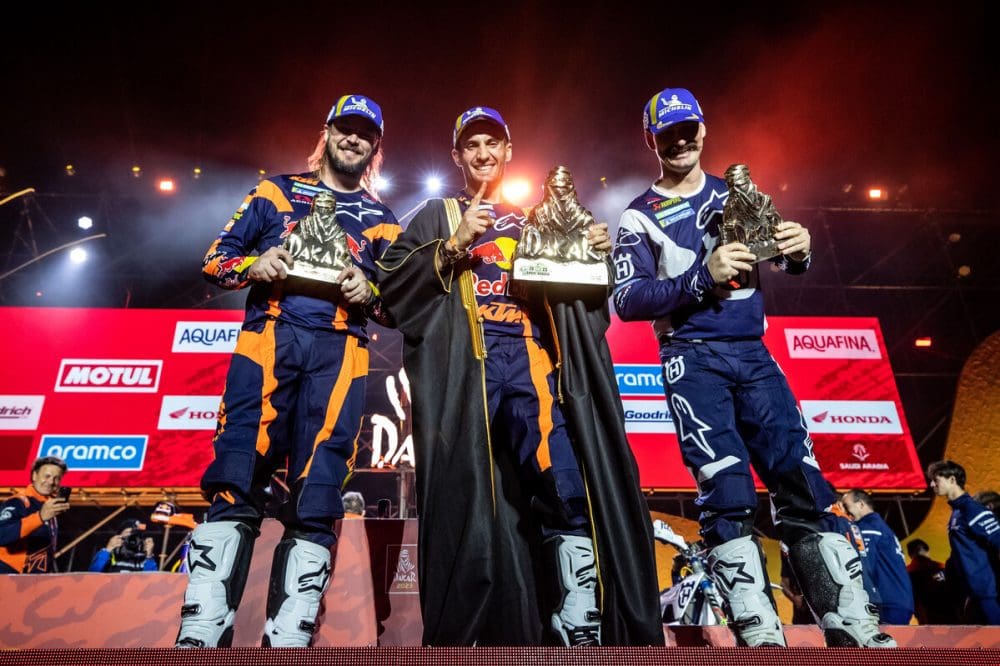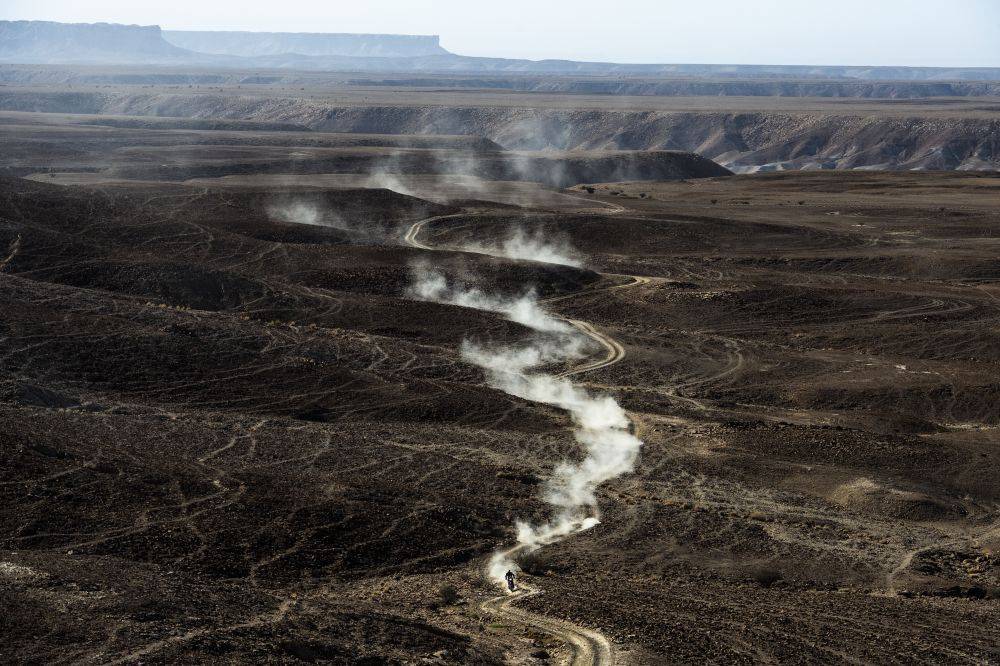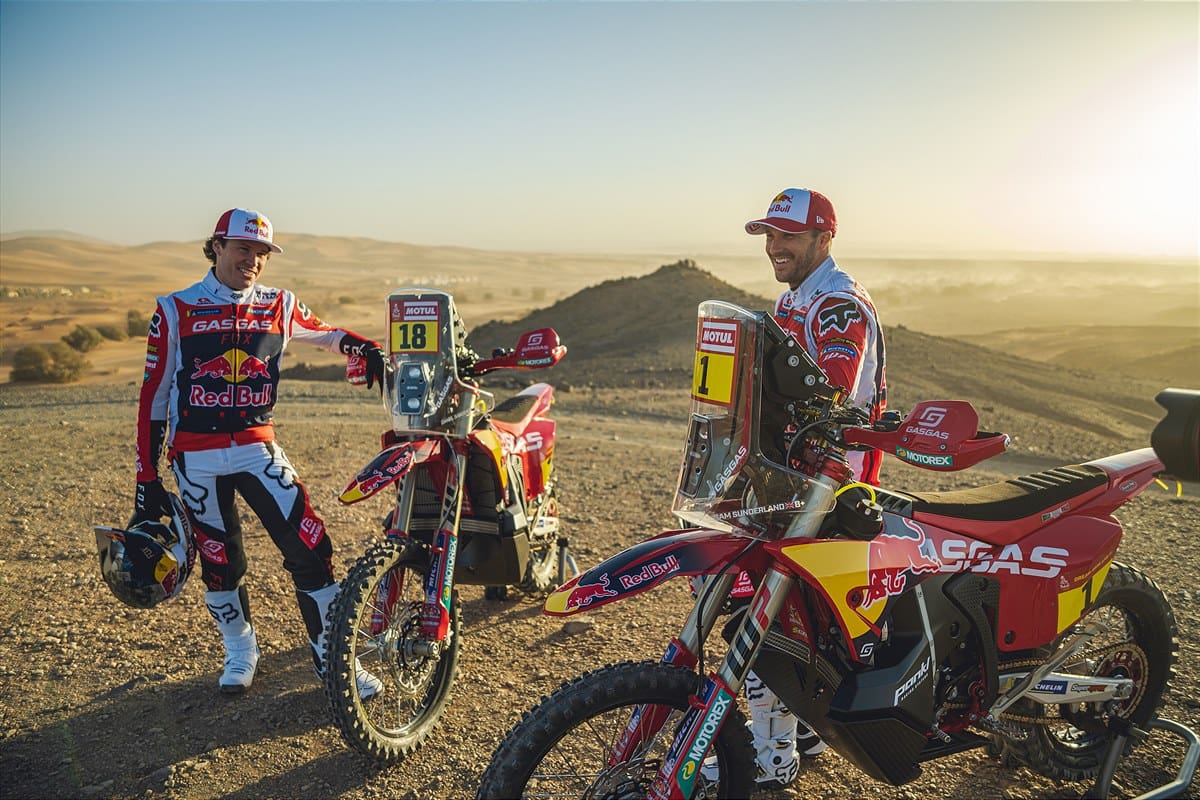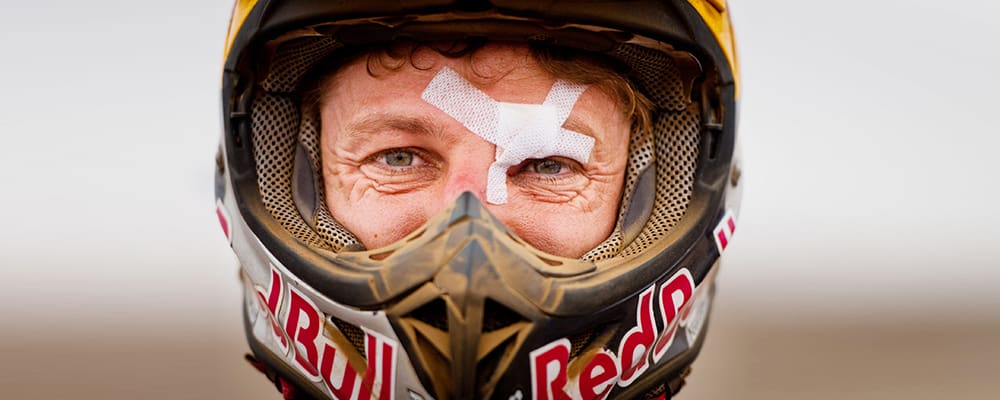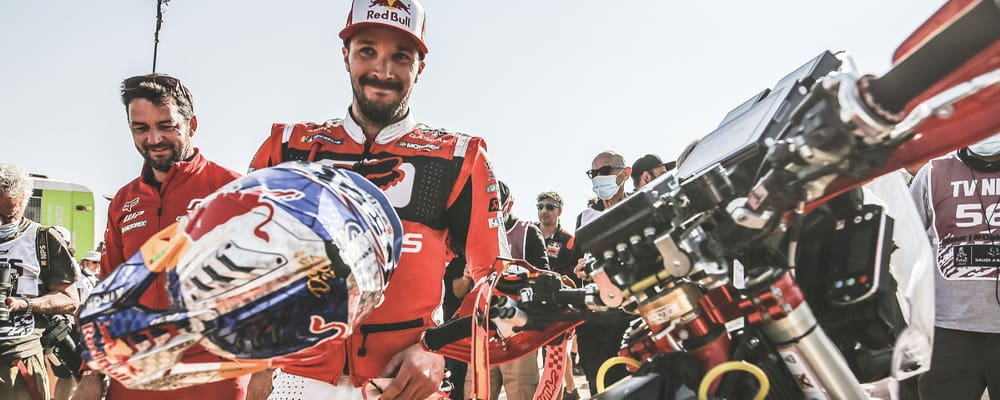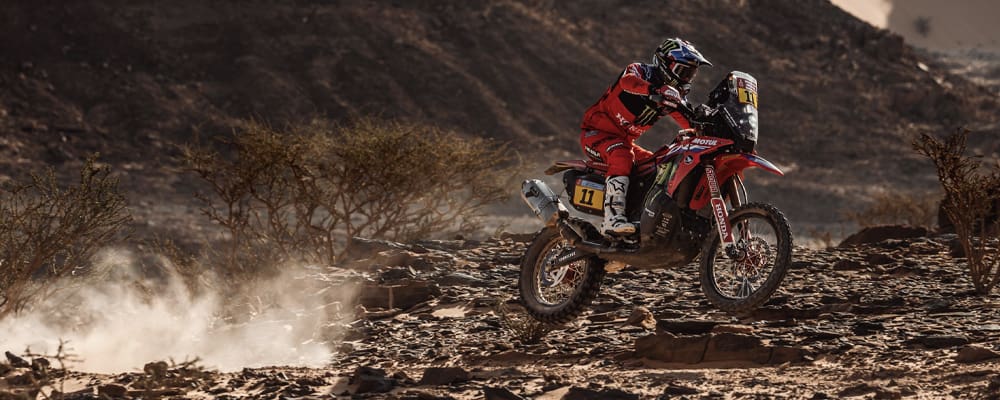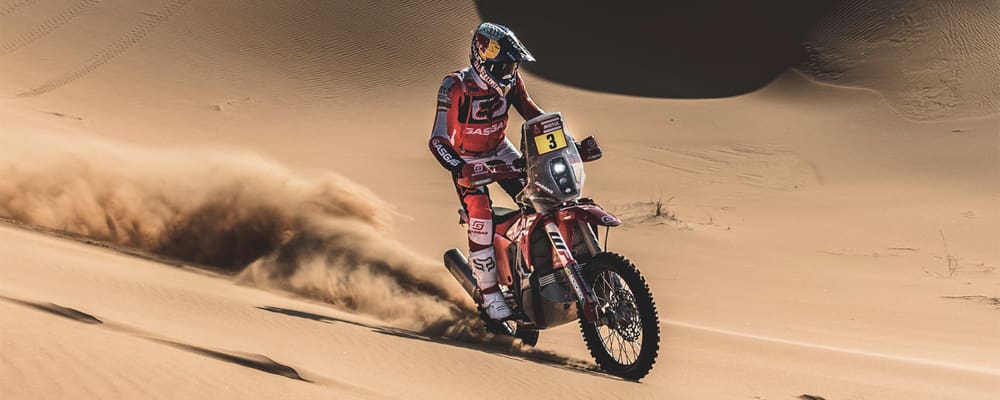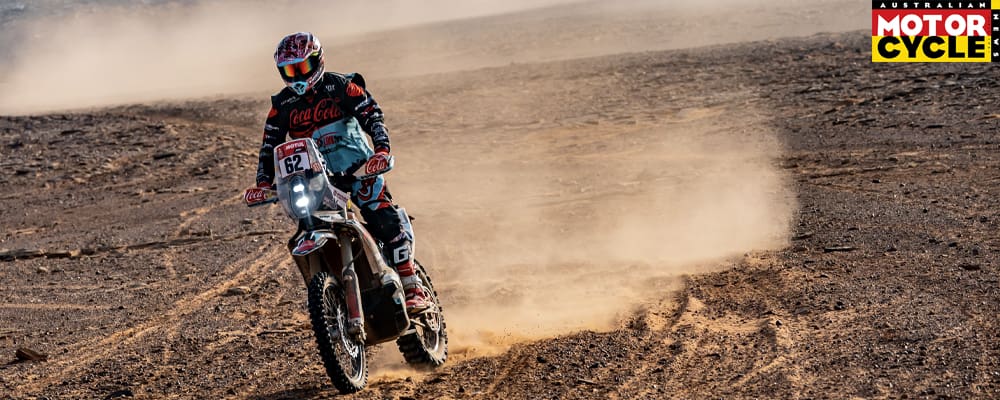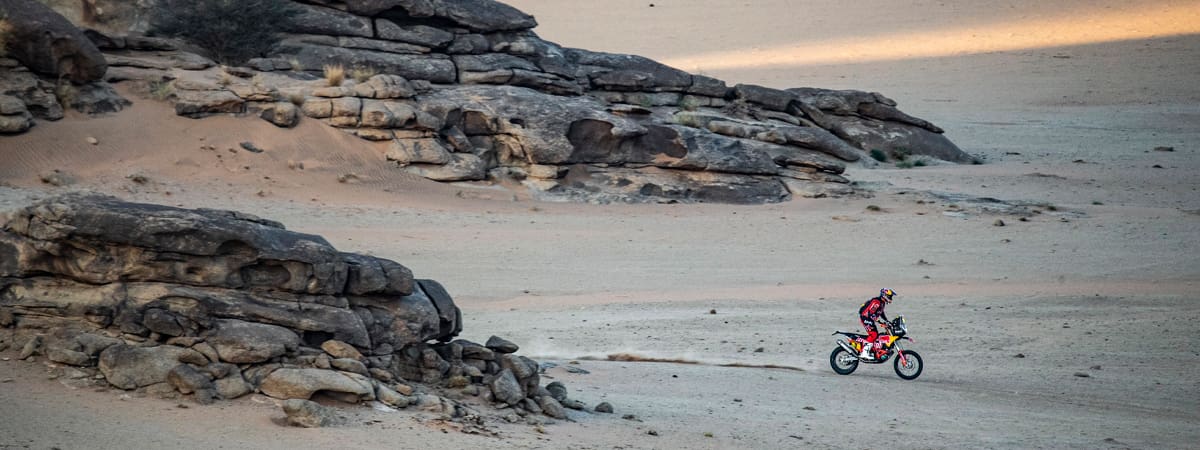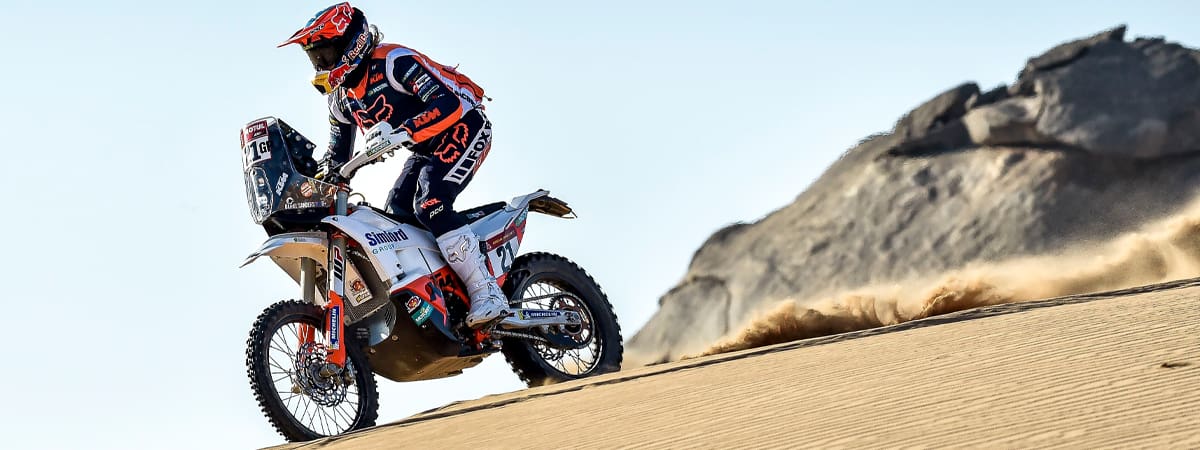Originally Dakar’s only priority was survival. Could a mob of like-minded adventurers survive a crossing of the most desolate region on the planet. Stamina – and maybe more than a bit of mechanical know-how – was critical. Speed was irrelevant.
Now survival is almost guaranteed; there’s an escape route, a refreshing shower, a cold drink, a hot meal and a reasonably comfortable bed waiting at the end of each day. Speed, timed to the second, is now the only criterion.
Except for one stage. A revised marathon section will take the Dakar back to its roots for a couple of days.
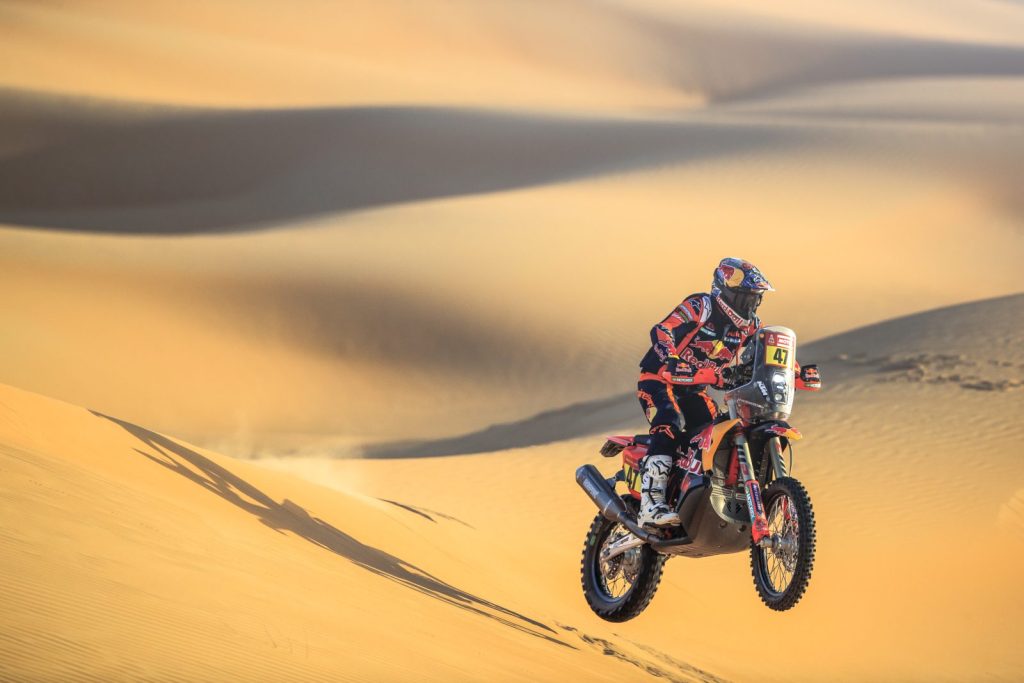
Also long past is the era when the Dakar was totally dominated by KTM, with Marc Coma riding the orange, red and white Repsol KTM 690 Rallye and Cyril Despres on an identical machine in blue Gauloises livery; each rider finishing their career with back-to-back wins in the mountains of South America.
This is an achievement no other rider has come close to since the Dakar was relocated to Saudi Arabia. However the KTM combine are in the ascendancy with Toby Price winning the Rallye Du Maroc and Luciano Benavides taking the 2023 World Rally Raid Championship for Husqvarna.
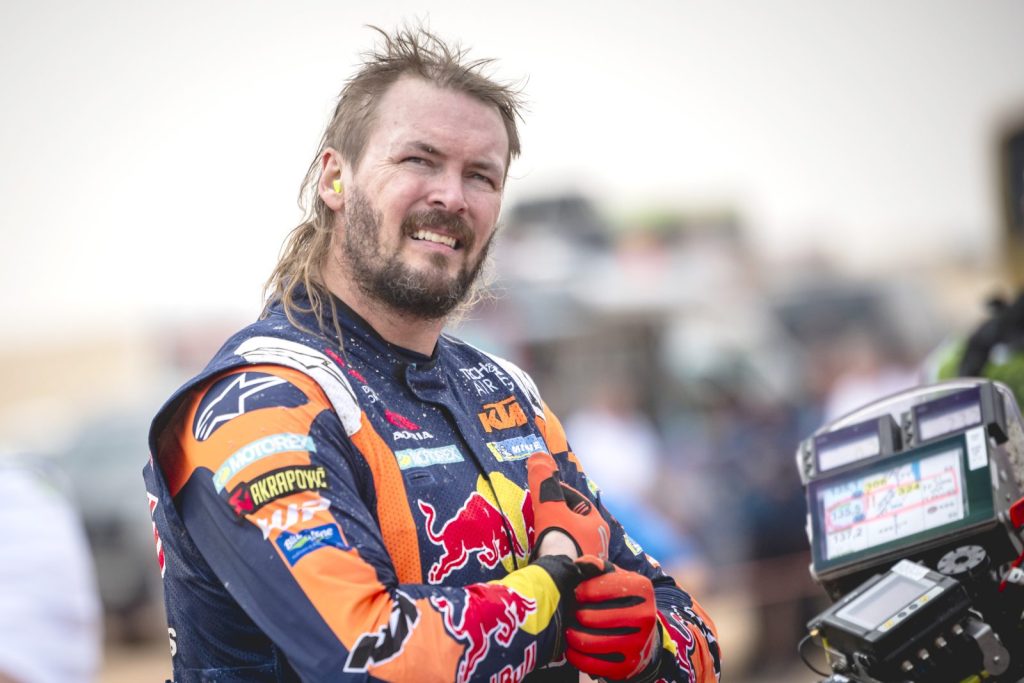
Providing they all survive the final training session, Honda HRC certainly has the numbers, though Pablo Quintanilla, Ricky Brabec, Adrien Van Beverin, Ignatio Cornejo and Skyler Howes were all upstaged in Morocco by young Spaniard Tosha Schareina riding a loaner from the back of the factory garage. No surprises that Schareina gets a full-blooded Monster Energy bike for this Dakar.
KTM Team Manager Andreas Hölzl already has problems. Matthias Walkner, who busted his tibia, fibia and ankle in training is now back in Austria for more surgery. Current Dakar champion Kevin Benavides, who spent most of 2023 in rehab, also crashed in practice.
“We hope Kevin will be back to near full fitness for Dakar,” Hölzl said in late December.
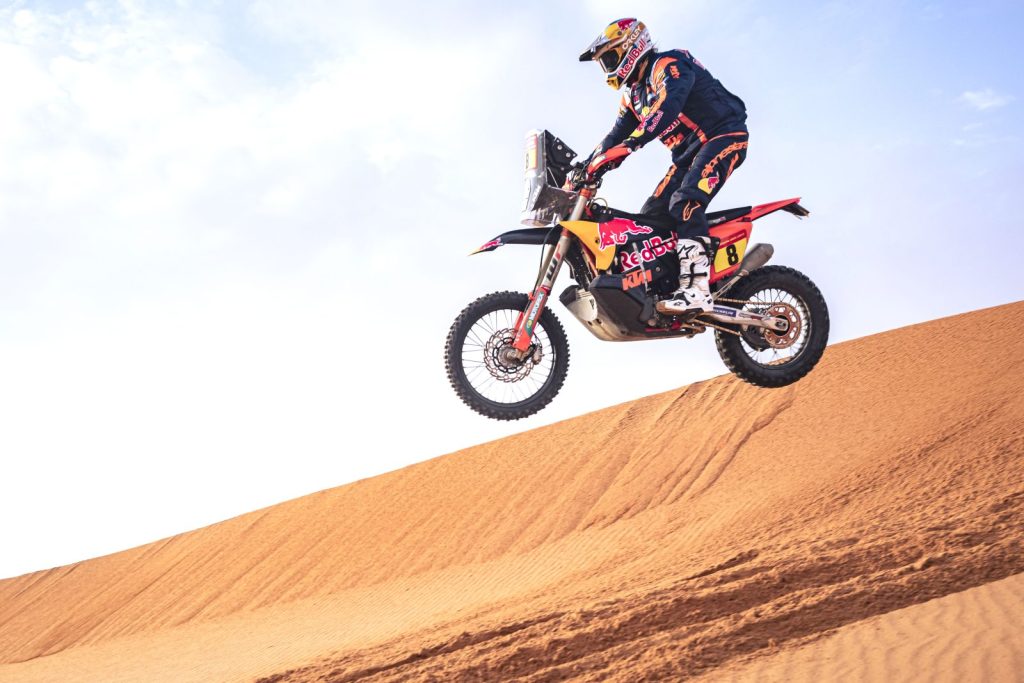
The bookies immediately shortened the odds on Toby Price, though the Husqvarna and GasGas guys – Luciano Benavides, Sam Sunderland and Daniel Sanders – will provide some mighty strong competition. One wonders what team orders Hölzl might hand down if, say, Price (KTM) and Sanders (GasGas) were going head-to-head for the win on the final day with a brace of Hondas in contention. There are many other top riders capable of a win. Lorenzo Santalino (Sherco) and Ross Branch (Hero) will pick up any scraps left by the top teams, leaving nothing for the Fantic Team or the Kove Team.
In 2023 the Saudi sponsors and the Amuary Sports Organisation hit a winner by awarding bonuses to the riders ‘opening the piste’. Obviously the value of the bonus varies due to the terrain but the new regimen produced the desired effect of tighter stage times in the moto division.
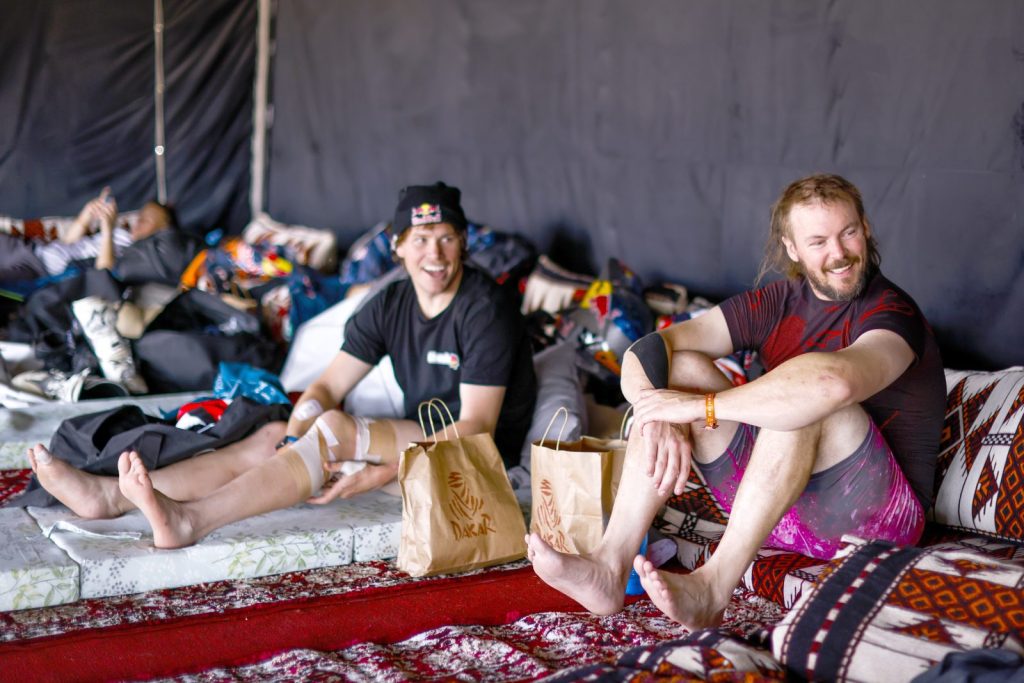
For 2024, the two days leading up to the rest day in Riyadh will take the autos on a different course to the motos. Thus, for the first time in decades, the leading autos will face the same navigational challenges as the motos. An additional benefit being that the fastest drivers will avoid the potential dangers of catching the slowest riders; often in the most precarious positions on the course.
The Dakar organisers claim the immense expanse of the Empty Quarter is ideal for two separate courses, so the system of bonuses awarded to motos in the 2023 Dakar will be extended to the autos in 2024. This all-new, two-day marathon stage, titled Chrono48H, will employ what is promoted as ‘a special format that surpasses the format imposed on the first sequence.’ Initial comments have included ‘crazy’ and ‘chaotic’. Certainly the logistics appear complex at first glance.

For this revised marathon, all the usual restrictions on outside assistance still apply. Although competitors may assist each other in the mini bivouacs they may lose connection with their teammates.
The Chrono48H concept (see breakout) was devised to keep riders incommunicado in determining strategy and keep them guessing as to their overall ranking. It will require some brainpower to overcome.
Maybe the riders won’t have satphones, but the navigators might find a way around the problem. And some of the riders are old enough to be able to look at their wristwatch while holding a pencil and paper; so they’ll know their standing to the nearest minute.
Yet will this knowledge be enough to keep an advantage?

With Kevin Benavides’ winning margin of 43 seconds over Toby Price in 2023, riders will need to be better informed. Had Price not incurred a one-minute penalty on Day 3, might he have beaten Benavides by 17 seconds. Penalties accrued by Daniel Sanders cost him three positions in the final standings in 2023, so avoiding infractions is something team managers will hammer home in 2024.
It begs the question as to when a future Dakar victory might be decided on a speeding penalty.
Now that’s something Paris to Dakar initiator Thierry Sabine never considered when he and his mates roosted south from Paris back in 1978.

CHRONO 48H SIMPLIFIED
Days 5 and 6 of the 2024 Dakar will consist of a single 532km special stage for motos and quads. A second, totally separate 532km special stage, will be set for buggies, autos and trucks.
Both specials will be linked to a total of eight remote mini bivouacs through which both routes must pass.
All competitors will start Day 5 in the usual manner and proceed until 4pm, after which all vehicles – on both routes – are obliged to stop and remain at the next bivouac they come across.
At 7am the following morning the competitors will set out (in the same order in which they arrived) to complete the nominated 532km special stage.
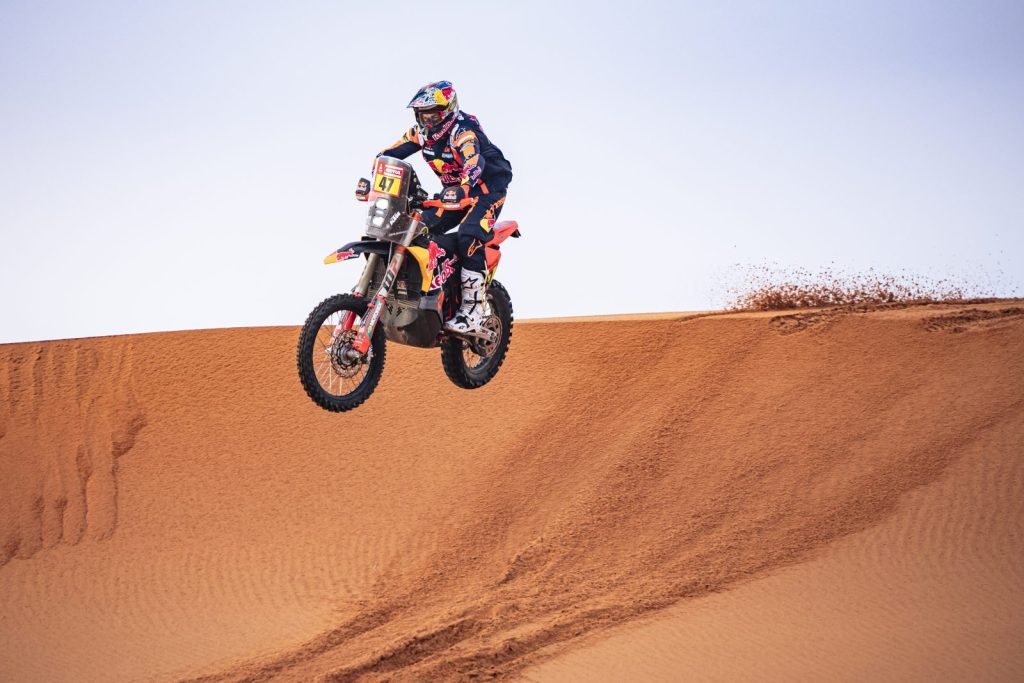
BRIEFS
Digital roadbooks
Despite the determination of the organisers it’s unlikely the proposed digital roadbooks will make an appearance on motos until they are fully tested on a shorter round of the Rally Raid series. Latest news is that several RallyGP veterans who’ve tested the units have reported that glare and dust render the screens dangerous at high speeds. For Dakar 2024 it appears the riders will stick paper rolls and highlighters in the colours of their choosing.
Sandy sustainability
The Mission 1000 program will pit a battery-powered bike against a 1500kg side-by-side; developed jointly by Honda, Kawasaki, Suzuki, Yamaha and Toyota. Also in the mix is a hydrogen-powered Volkswagen Amarok 4X4. These three vehicles will participate in the first 100km of each 2024 rally stage. The bike will be ridden by enduro veteran Fran Pallas. While he won’t lack power, Pallas and his steed will weigh in at 300kg as opposed to 250kg for a fully fuelled rally bike and rider.
Klein on a Kove
Talented American privateer Mason Klein will be supported by Chinese manufacturer Kove for 2024. Klein, who finished top-10 in the 2022 Rally2 Division and has been elevated to RallyGP status, will have equal access to parts and resources as the Kove factory team, which had a 100 percent finishing rate on debut in 2023.
Game-changing finish
The final stage of Dakar 2024 will be held over a spectator-friendly 175km loop from the city of Yanbo. Just as last year, organisers have engineered an exciting finish by starting the riders in reverse order to their standing after Stage 11. So, after all those days of attempting to out-manoeuvre and overwhelm their peers, the top-10 contenders will have to negotiate their way past exhausted packs of midfielders, whose only ambition is to finish the event in one piece.

PEDRO’S PREDICTIONS

The rise and fall of Dakar’s top 12
Statistical analysis of all available data confirms there are an elite 12 riders capable of a Dakar victory. Further scrutiny reveals it is all but certain that one of the dozen will crash before the rest day and another will crash after the rest day. One of these two riders will be choppered to hospital for surgery and be in rehab before the 2024 Dakar winner crosses the finish line.
Another two riders will endure the misfortune of mechanical failure in the middle of Saudi Arabia’s Empty Corner. The cause could be as dramatic as a piston meltdown, or simply an electrical short that occurs only when the front wheel rotates. No matter, these occurrences will be designated ‘technical issues’ caused by fuel impurities and both riders will be classified DNF.
A fifth and then a sixth elite rider will make rookie navigational errors, either in tandem or individually. These mistakes will cost more than enough time to put both riders out of contention for a podium.
By the second week of Dakar, the survivors will be suffering from past injuries, all requiring more than a handful of Nurofen with their morning coffee. One of these riders will suffer unbearable discomfort and slip down the rankings. Withdrawal would be safer and healthier but unimaginable.
Indiscriminate illness will affect another elite rider. Eating contaminated couscous, too many days battling dehydration, or simply following another competitor too closely through desiccated camel droppings will cause sufficient debilitation to drop this rider off the leader board. Penalties for speeding through ‘quiet zones’, or similar infractions, will cost another of the 12 elite riders a spot on the podium.
So there you have it. The remaining three riders will mount the podium, count their blessings, thank their team and sponsors, then find a cool drink.
- WORDS PETER WHITAKER PHOTOS RED BULL & AMCN ARCHIVES
